Consumer Electronics
Automotive
Healthcare
Industrial Automation
Smart Home
Microcontroller
Microprocessor
Connectivity IC
Sensor
Memory
Bluetooth
Wi-Fi
Zigbee
Cellular
LoRa
Retail
Transportation
Energy Management
Agriculture
Healthcare
North America
Europe
South America
Asia Pacific
Middle East and Africa
North America Outlook (USD Billion, 2019-2035)
North America IoT Chips Market by Application Type
Consumer Electronics
Automotive
Healthcare
Industrial Automation
Smart Home
North America IoT Chips Market by Component Type
Microcontroller
Microprocessor
Connectivity IC
Sensor
Memory
North America IoT Chips Market by Connectivity Technology Type
Bluetooth
Wi-Fi
Zigbee
Cellular
LoRa
North America IoT Chips Market by End Use Type
Retail
Transportation
Energy Management
Agriculture
Healthcare
North America IoT Chips Market by Regional Type
US
Canada
US Outlook (USD Billion, 2019-2035)
US IoT Chips Market by Application Type
Consumer Electronics
Automotive
Healthcare
Industrial Automation
Smart Home
US IoT Chips Market by Component Type
Microcontroller
Microprocessor
Connectivity IC
Sensor
Memory
US IoT Chips Market by Connectivity Technology Type
Bluetooth
Wi-Fi
Zigbee
Cellular
LoRa
US IoT Chips Market by End Use Type
Retail
Transportation
Energy Management
Agriculture
Healthcare
CANADA Outlook (USD Billion, 2019-2035)
CANADA IoT Chips Market by Application Type
Consumer Electronics
Automotive
Healthcare
Industrial Automation
Smart Home
CANADA IoT Chips Market by Component Type
Microcontroller
Microprocessor
Connectivity IC
Sensor
Memory
CANADA IoT Chips Market by Connectivity Technology Type
Bluetooth
Wi-Fi
Zigbee
Cellular
LoRa
CANADA IoT Chips Market by End Use Type
Retail
Transportation
Energy Management
Agriculture
Healthcare
Europe Outlook (USD Billion, 2019-2035)
Europe IoT Chips Market by Application Type
Consumer Electronics
Automotive
Healthcare
Industrial Automation
Smart Home
Europe IoT Chips Market by Component Type
Microcontroller
Microprocessor
Connectivity IC
Sensor
Memory
Europe IoT Chips Market by Connectivity Technology Type
Bluetooth
Wi-Fi
Zigbee
Cellular
LoRa
Europe IoT Chips Market by End Use Type
Retail
Transportation
Energy Management
Agriculture
Healthcare
Europe IoT Chips Market by Regional Type
Germany
UK
France
Russia
Italy
Spain
Rest of Europe
GERMANY Outlook (USD Billion, 2019-2035)
GERMANY IoT Chips Market by Application Type
Consumer Electronics
Automotive
Healthcare
Industrial Automation
Smart Home
GERMANY IoT Chips Market by Component Type
Microcontroller
Microprocessor
Connectivity IC
Sensor
Memory
GERMANY IoT Chips Market by Connectivity Technology Type
Bluetooth
Wi-Fi
Zigbee
Cellular
LoRa
GERMANY IoT Chips Market by End Use Type
Retail
Transportation
Energy Management
Agriculture
Healthcare
UK Outlook (USD Billion, 2019-2035)
UK IoT Chips Market by Application Type
Consumer Electronics
Automotive
Healthcare
Industrial Automation
Smart Home
UK IoT Chips Market by Component Type
Microcontroller
Microprocessor
Connectivity IC
Sensor
Memory
UK IoT Chips Market by Connectivity Technology Type
Bluetooth
Wi-Fi
Zigbee
Cellular
LoRa
UK IoT Chips Market by End Use Type
Retail
Transportation
Energy Management
Agriculture
Healthcare
FRANCE Outlook (USD Billion, 2019-2035)
FRANCE IoT Chips Market by Application Type
Consumer Electronics
Automotive
Healthcare
Industrial Automation
Smart Home
FRANCE IoT Chips Market by Component Type
Microcontroller
Microprocessor
Connectivity IC
Sensor
Memory
FRANCE IoT Chips Market by Connectivity Technology Type
Bluetooth
Wi-Fi
Zigbee
Cellular
LoRa
FRANCE IoT Chips Market by End Use Type
Retail
Transportation
Energy Management
Agriculture
Healthcare
RUSSIA Outlook (USD Billion, 2019-2035)
RUSSIA IoT Chips Market by Application Type
Consumer Electronics
Automotive
Healthcare
Industrial Automation
Smart Home
RUSSIA IoT Chips Market by Component Type
Microcontroller
Microprocessor
Connectivity IC
Sensor
Memory
RUSSIA IoT Chips Market by Connectivity Technology Type
Bluetooth
Wi-Fi
Zigbee
Cellular
LoRa
RUSSIA IoT Chips Market by End Use Type
Retail
Transportation
Energy Management
Agriculture
Healthcare
ITALY Outlook (USD Billion, 2019-2035)
ITALY IoT Chips Market by Application Type
Consumer Electronics
Automotive
Healthcare
Industrial Automation
Smart Home
ITALY IoT Chips Market by Component Type
Microcontroller
Microprocessor
Connectivity IC
Sensor
Memory
ITALY IoT Chips Market by Connectivity Technology Type
Bluetooth
Wi-Fi
Zigbee
Cellular
LoRa
ITALY IoT Chips Market by End Use Type
Retail
Transportation
Energy Management
Agriculture
Healthcare
SPAIN Outlook (USD Billion, 2019-2035)
SPAIN IoT Chips Market by Application Type
Consumer Electronics
Automotive
Healthcare
Industrial Automation
Smart Home
SPAIN IoT Chips Market by Component Type
Microcontroller
Microprocessor
Connectivity IC
Sensor
Memory
SPAIN IoT Chips Market by Connectivity Technology Type
Bluetooth
Wi-Fi
Zigbee
Cellular
LoRa
SPAIN IoT Chips Market by End Use Type
Retail
Transportation
Energy Management
Agriculture
Healthcare
REST OF EUROPE Outlook (USD Billion, 2019-2035)
REST OF EUROPE IoT Chips Market by Application Type
Consumer Electronics
Automotive
Healthcare
Industrial Automation
Smart Home
REST OF EUROPE IoT Chips Market by Component Type
Microcontroller
Microprocessor
Connectivity IC
Sensor
Memory
REST OF EUROPE IoT Chips Market by Connectivity Technology Type
Bluetooth
Wi-Fi
Zigbee
Cellular
LoRa
REST OF EUROPE IoT Chips Market by End Use Type
Retail
Transportation
Energy Management
Agriculture
Healthcare
APAC Outlook (USD Billion, 2019-2035)
APAC IoT Chips Market by Application Type
Consumer Electronics
Automotive
Healthcare
Industrial Automation
Smart Home
APAC IoT Chips Market by Component Type
Microcontroller
Microprocessor
Connectivity IC
Sensor
Memory
APAC IoT Chips Market by Connectivity Technology Type
Bluetooth
Wi-Fi
Zigbee
Cellular
LoRa
APAC IoT Chips Market by End Use Type
Retail
Transportation
Energy Management
Agriculture
Healthcare
APAC IoT Chips Market by Regional Type
China
India
Japan
South Korea
Malaysia
Thailand
Indonesia
Rest of APAC
CHINA Outlook (USD Billion, 2019-2035)
CHINA IoT Chips Market by Application Type
Consumer Electronics
Automotive
Healthcare
Industrial Automation
Smart Home
CHINA IoT Chips Market by Component Type
Microcontroller
Microprocessor
Connectivity IC
Sensor
Memory
CHINA IoT Chips Market by Connectivity Technology Type
Bluetooth
Wi-Fi
Zigbee
Cellular
LoRa
CHINA IoT Chips Market by End Use Type
Retail
Transportation
Energy Management
Agriculture
Healthcare
INDIA Outlook (USD Billion, 2019-2035)
INDIA IoT Chips Market by Application Type
Consumer Electronics
Automotive
Healthcare
Industrial Automation
Smart Home
INDIA IoT Chips Market by Component Type
Microcontroller
Microprocessor
Connectivity IC
Sensor
Memory
INDIA IoT Chips Market by Connectivity Technology Type
Bluetooth
Wi-Fi
Zigbee
Cellular
LoRa
INDIA IoT Chips Market by End Use Type
Retail
Transportation
Energy Management
Agriculture
Healthcare
JAPAN Outlook (USD Billion, 2019-2035)
JAPAN IoT Chips Market by Application Type
Consumer Electronics
Automotive
Healthcare
Industrial Automation
Smart Home
JAPAN IoT Chips Market by Component Type
Microcontroller
Microprocessor
Connectivity IC
Sensor
Memory
JAPAN IoT Chips Market by Connectivity Technology Type
Bluetooth
Wi-Fi
Zigbee
Cellular
LoRa
JAPAN IoT Chips Market by End Use Type
Retail
Transportation
Energy Management
Agriculture
Healthcare
SOUTH KOREA Outlook (USD Billion, 2019-2035)
SOUTH KOREA IoT Chips Market by Application Type
Consumer Electronics
Automotive
Healthcare
Industrial Automation
Smart Home
SOUTH KOREA IoT Chips Market by Component Type
Microcontroller
Microprocessor
Connectivity IC
Sensor
Memory
SOUTH KOREA IoT Chips Market by Connectivity Technology Type
Bluetooth
Wi-Fi
Zigbee
Cellular
LoRa
SOUTH KOREA IoT Chips Market by End Use Type
Retail
Transportation
Energy Management
Agriculture
Healthcare
MALAYSIA Outlook (USD Billion, 2019-2035)
MALAYSIA IoT Chips Market by Application Type
Consumer Electronics
Automotive
Healthcare
Industrial Automation
Smart Home
MALAYSIA IoT Chips Market by Component Type
Microcontroller
Microprocessor
Connectivity IC
Sensor
Memory
MALAYSIA IoT Chips Market by Connectivity Technology Type
Bluetooth
Wi-Fi
Zigbee
Cellular
LoRa
MALAYSIA IoT Chips Market by End Use Type
Retail
Transportation
Energy Management
Agriculture
Healthcare
THAILAND Outlook (USD Billion, 2019-2035)
THAILAND IoT Chips Market by Application Type
Consumer Electronics
Automotive
Healthcare
Industrial Automation
Smart Home
THAILAND IoT Chips Market by Component Type
Microcontroller
Microprocessor
Connectivity IC
Sensor
Memory
THAILAND IoT Chips Market by Connectivity Technology Type
Bluetooth
Wi-Fi
Zigbee
Cellular
LoRa
THAILAND IoT Chips Market by End Use Type
Retail
Transportation
Energy Management
Agriculture
Healthcare
INDONESIA Outlook (USD Billion, 2019-2035)
INDONESIA IoT Chips Market by Application Type
Consumer Electronics
Automotive
Healthcare
Industrial Automation
Smart Home
INDONESIA IoT Chips Market by Component Type
Microcontroller
Microprocessor
Connectivity IC
Sensor
Memory
INDONESIA IoT Chips Market by Connectivity Technology Type
Bluetooth
Wi-Fi
Zigbee
Cellular
LoRa
INDONESIA IoT Chips Market by End Use Type
Retail
Transportation
Energy Management
Agriculture
Healthcare
REST OF APAC Outlook (USD Billion, 2019-2035)
REST OF APAC IoT Chips Market by Application Type
Consumer Electronics
Automotive
Healthcare
Industrial Automation
Smart Home
REST OF APAC IoT Chips Market by Component Type
Microcontroller
Microprocessor
Connectivity IC
Sensor
Memory
REST OF APAC IoT Chips Market by Connectivity Technology Type
Bluetooth
Wi-Fi
Zigbee
Cellular
LoRa
REST OF APAC IoT Chips Market by End Use Type
Retail
Transportation
Energy Management
Agriculture
Healthcare
South America Outlook (USD Billion, 2019-2035)
South America IoT Chips Market by Application Type
Consumer Electronics
Automotive
Healthcare
Industrial Automation
Smart Home
South America IoT Chips Market by Component Type
Microcontroller
Microprocessor
Connectivity IC
Sensor
Memory
South America IoT Chips Market by Connectivity Technology Type
Bluetooth
Wi-Fi
Zigbee
Cellular
LoRa
South America IoT Chips Market by End Use Type
Retail
Transportation
Energy Management
Agriculture
Healthcare
South America IoT Chips Market by Regional Type
Brazil
Mexico
Argentina
Rest of South America
BRAZIL Outlook (USD Billion, 2019-2035)
BRAZIL IoT Chips Market by Application Type
Consumer Electronics
Automotive
Healthcare
Industrial Automation
Smart Home
BRAZIL IoT Chips Market by Component Type
Microcontroller
Microprocessor
Connectivity IC
Sensor
Memory
BRAZIL IoT Chips Market by Connectivity Technology Type
Bluetooth
Wi-Fi
Zigbee
Cellular
LoRa
BRAZIL IoT Chips Market by End Use Type
Retail
Transportation
Energy Management
Agriculture
Healthcare
MEXICO Outlook (USD Billion, 2019-2035)
MEXICO IoT Chips Market by Application Type
Consumer Electronics
Automotive
Healthcare
Industrial Automation
Smart Home
MEXICO IoT Chips Market by Component Type
Microcontroller
Microprocessor
Connectivity IC
Sensor
Memory
MEXICO IoT Chips Market by Connectivity Technology Type
Bluetooth
Wi-Fi
Zigbee
Cellular
LoRa
MEXICO IoT Chips Market by End Use Type
Retail
Transportation
Energy Management
Agriculture
Healthcare
ARGENTINA Outlook (USD Billion, 2019-2035)
ARGENTINA IoT Chips Market by Application Type
Consumer Electronics
Automotive
Healthcare
Industrial Automation
Smart Home
ARGENTINA IoT Chips Market by Component Type
Microcontroller
Microprocessor
Connectivity IC
Sensor
Memory
ARGENTINA IoT Chips Market by Connectivity Technology Type
Bluetooth
Wi-Fi
Zigbee
Cellular
LoRa
ARGENTINA IoT Chips Market by End Use Type
Retail
Transportation
Energy Management
Agriculture
Healthcare
REST OF SOUTH AMERICA Outlook (USD Billion, 2019-2035)
REST OF SOUTH AMERICA IoT Chips Market by Application Type
Consumer Electronics
Automotive
Healthcare
Industrial Automation
Smart Home
REST OF SOUTH AMERICA IoT Chips Market by Component Type
Microcontroller
Microprocessor
Connectivity IC
Sensor
Memory
REST OF SOUTH AMERICA IoT Chips Market by Connectivity Technology Type
Bluetooth
Wi-Fi
Zigbee
Cellular
LoRa
REST OF SOUTH AMERICA IoT Chips Market by End Use Type
Retail
Transportation
Energy Management
Agriculture
Healthcare
MEA Outlook (USD Billion, 2019-2035)
MEA IoT Chips Market by Application Type
Consumer Electronics
Automotive
Healthcare
Industrial Automation
Smart Home
MEA IoT Chips Market by Component Type
Microcontroller
Microprocessor
Connectivity IC
Sensor
Memory
MEA IoT Chips Market by Connectivity Technology Type
Bluetooth
Wi-Fi
Zigbee
Cellular
LoRa
MEA IoT Chips Market by End Use Type
Retail
Transportation
Energy Management
Agriculture
Healthcare
MEA IoT Chips Market by Regional Type
GCC Countries
South Africa
Rest of MEA
GCC COUNTRIES Outlook (USD Billion, 2019-2035)
GCC COUNTRIES IoT Chips Market by Application Type
Consumer Electronics
Automotive
Healthcare
Industrial Automation
Smart Home
GCC COUNTRIES IoT Chips Market by Component Type
Microcontroller
Microprocessor
Connectivity IC
Sensor
Memory
GCC COUNTRIES IoT Chips Market by Connectivity Technology Type
Bluetooth
Wi-Fi
Zigbee
Cellular
LoRa
GCC COUNTRIES IoT Chips Market by End Use Type
Retail
Transportation
Energy Management
Agriculture
Healthcare
SOUTH AFRICA Outlook (USD Billion, 2019-2035)
SOUTH AFRICA IoT Chips Market by Application Type
Consumer Electronics
Automotive
Healthcare
Industrial Automation
Smart Home
SOUTH AFRICA IoT Chips Market by Component Type
Microcontroller
Microprocessor
Connectivity IC
Sensor
Memory
SOUTH AFRICA IoT Chips Market by Connectivity Technology Type
Bluetooth
Wi-Fi
Zigbee
Cellular
LoRa
SOUTH AFRICA IoT Chips Market by End Use Type
Retail
Transportation
Energy Management
Agriculture
Healthcare
REST OF MEA Outlook (USD Billion, 2019-2035)
REST OF MEA IoT Chips Market by Application Type
Consumer Electronics
Automotive
Healthcare
Industrial Automation
Smart Home
REST OF MEA IoT Chips Market by Component Type
Microcontroller
Microprocessor
Connectivity IC
Sensor
Memory
REST OF MEA IoT Chips Market by Connectivity Technology Type
Bluetooth
Wi-Fi
Zigbee
Cellular
LoRa
REST OF MEA IoT Chips Market by End Use Type
Retail
Transportation
Energy Management
Agriculture
Healthcare
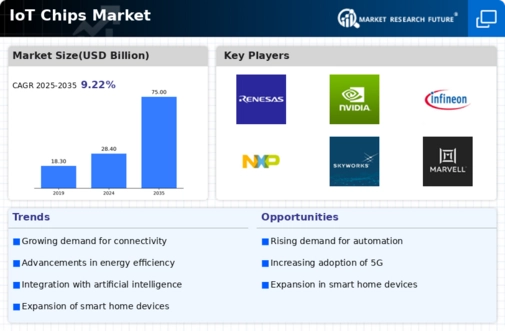
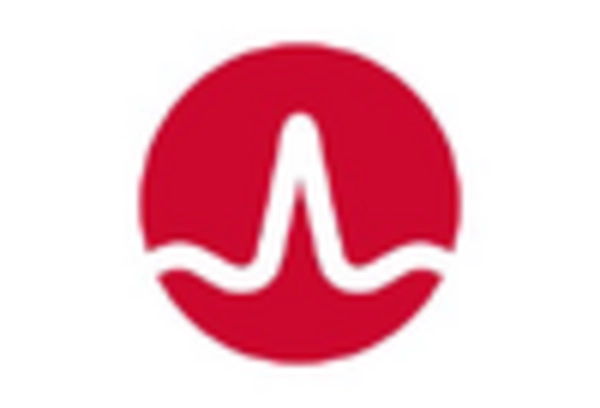
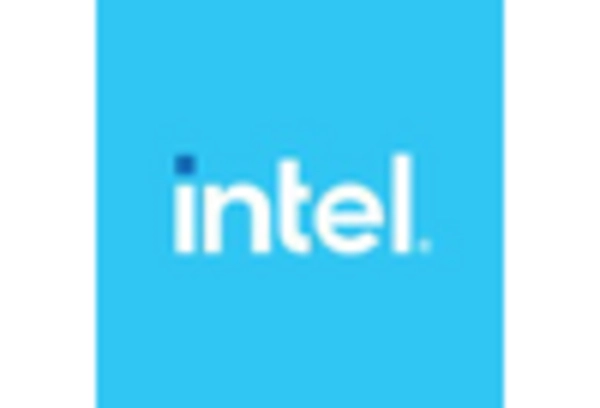
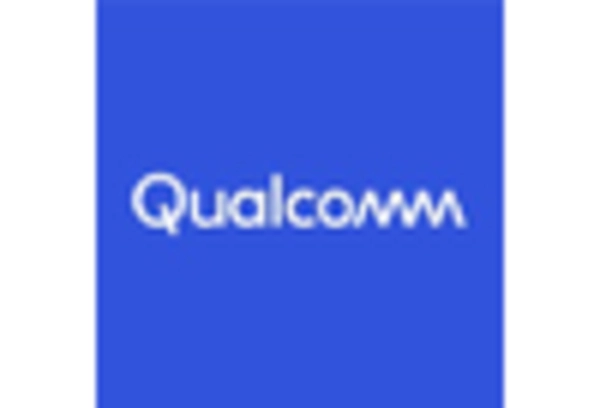
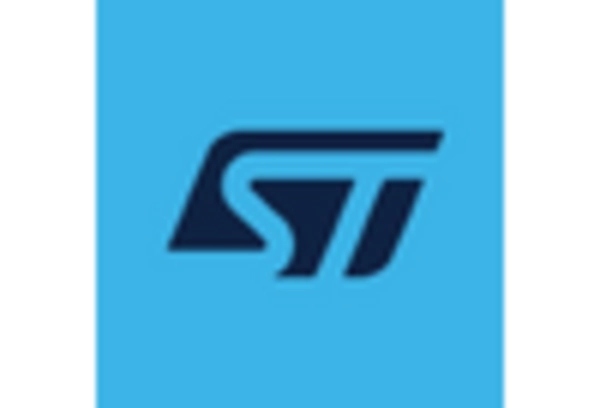










Leave a Comment